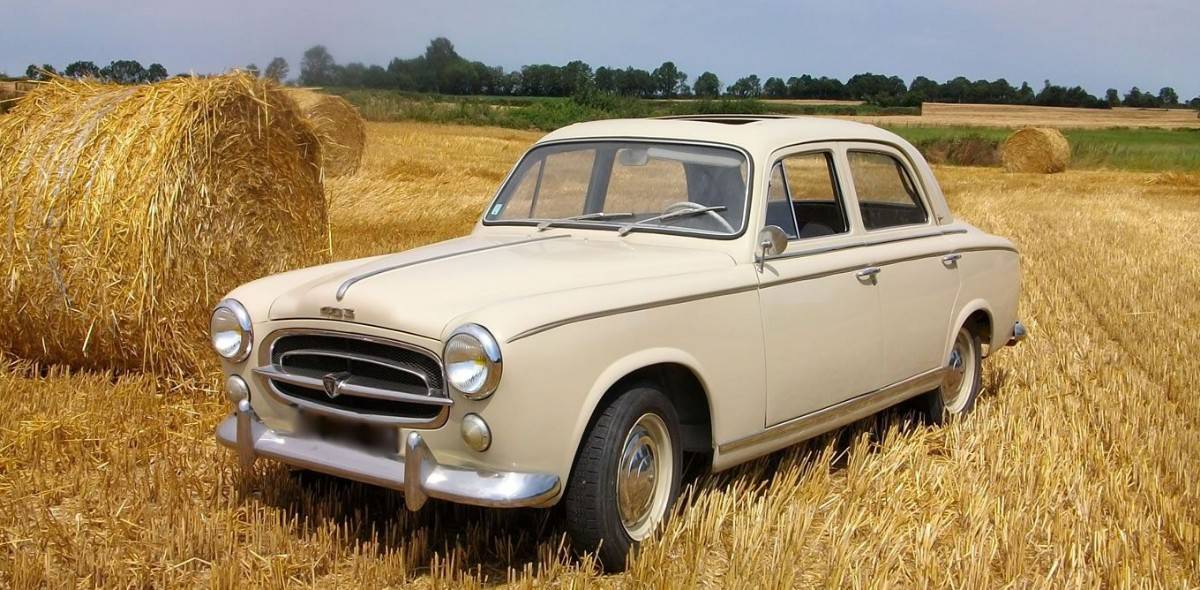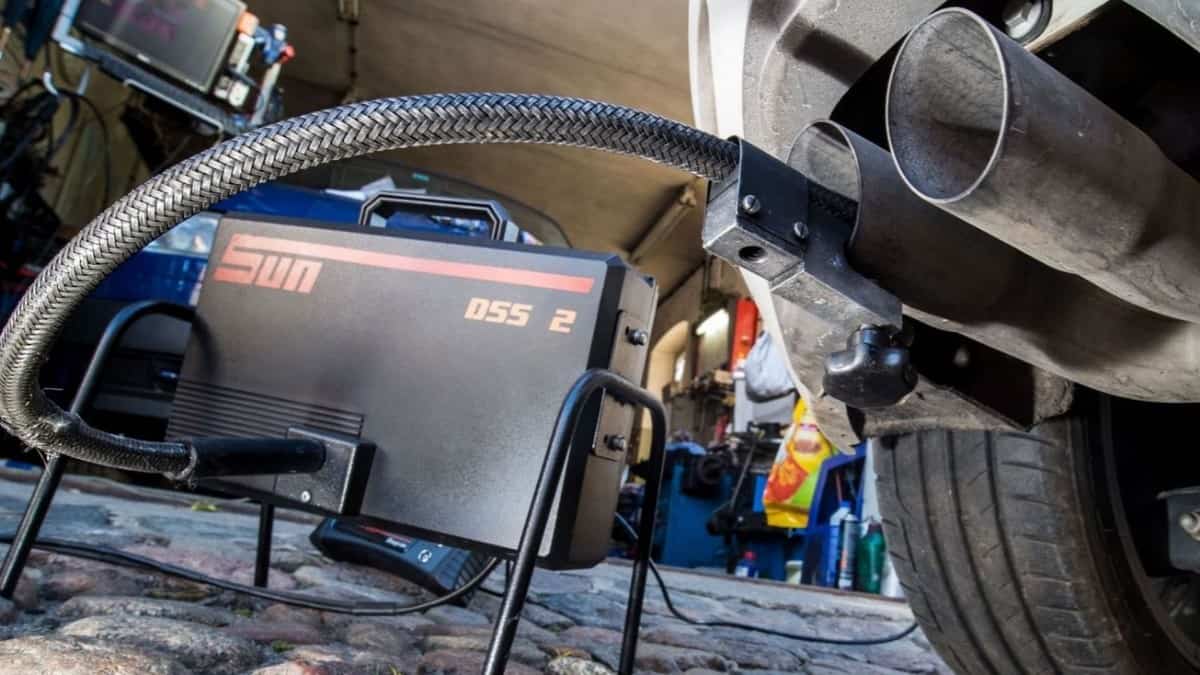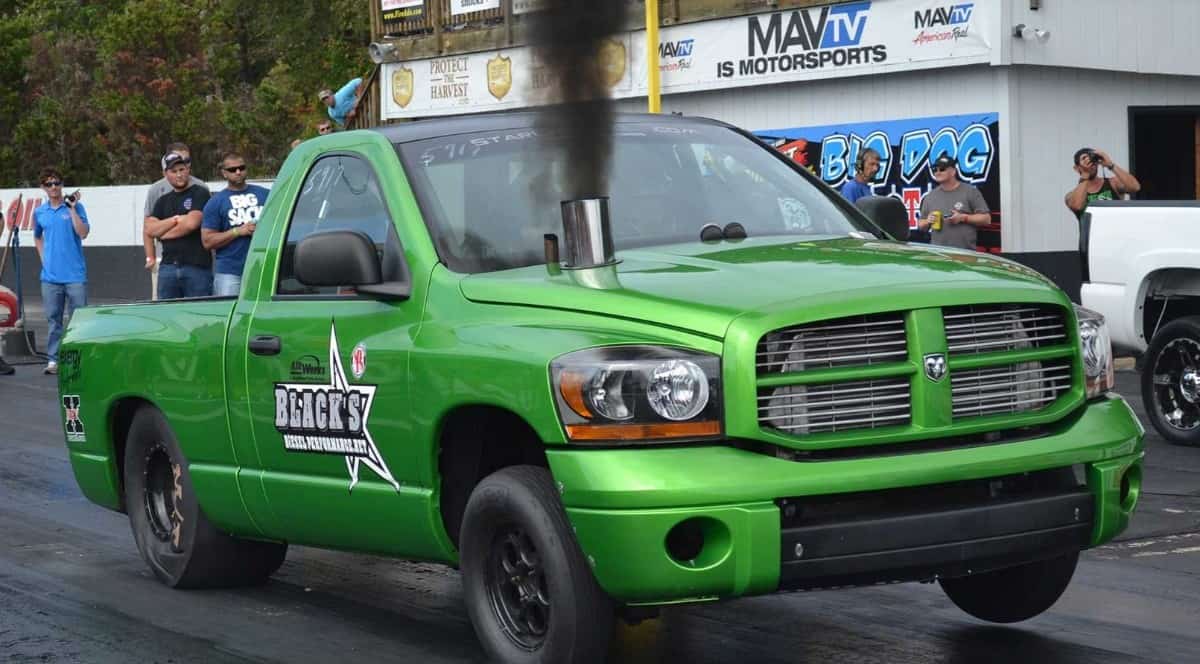Most people think of diesel engines as a smog-emitting fuel that’s only used in tractors and loud trucks. Because of recent technological advances, the introduction of ultra-low sulfur diesel fuel, and newer exhaust treatment system, this is no longer the case. Not only are diesel engines up to 35% more efficient than gasoline counterparts, but they must meet the same emission standards. That’s why they’ve become a popular choice for anyone that commutes or wants better fuel economy.
They’ve been around since the 1930s and started in commercial applications. They didn’t become popular as a means of passenger transportation until the 1960s in Europe. Today, they’re proven to offer high performance and create less carbon dioxide than gasoline engines, but they do produce additional nitrous oxides.
History of Diesel Automobiles
The Early Years
The production of diesel cars began in 1933 with the Citroën’s Rosalie. The Familiale featured a 1,766 cc 11UD diesel engine. A few years later, the Mercedes-Benz 260D plus the Hanomag Rekord also came with a diesel engine.
Right after the Second World War II, diesel vehicles began to grow in popularity. At the time, they were mainly used for commercial functions such as taxis, delivery wagons, and ambulances. Mercedes even offered a stream of taxis starting in 1949. They first supplied the 170D which had an OM-636 engine but later introduced the 180D with an OM-621 engine.
 Starting in 1959, Peugeot released their 403D which had a TMD-85 four-cylinder motor. Then, three years after that, they debuted their 404D which had the same engine. Later, it was sold with an improved XD88 engine. During this time, there were several other diesel vehicles like the Isuzu Bellel, Austin A60 Cambridge, Borgward Hansa, Fiat 1400-A, and Standard Vanguard.
Starting in 1959, Peugeot released their 403D which had a TMD-85 four-cylinder motor. Then, three years after that, they debuted their 404D which had the same engine. Later, it was sold with an improved XD88 engine. During this time, there were several other diesel vehicles like the Isuzu Bellel, Austin A60 Cambridge, Borgward Hansa, Fiat 1400-A, and Standard Vanguard.
By 1967, Peugeot released the first high-speed, compact diesel vehicle, the 204BD. Then, after the oil crisis of the 1970s, Volkswagen debuted the VW Golf, which was their first vehicle powered by diesel. It came with a 1.5-liter naturally-aspirated indirect-injection motor which was designed from a gasoline engine.
Around the same time, Mercedes began testing out turbo diesels in some vehicles. Their first production models were the 1978 300 SD, which was only distributed to North America.
Growth of the Diesel Vehicle
 The pivotal point for diesel vehicles came when the Peugeot Citroën released their XUD engine in 1982. They placed it inside the Talbot Horizon, Peugeot 205, and Peugeot 305. This allowed them to become the class-leading diesel automaker through the 1990s. They created a boom of diesel vehicles throughout Europe that made up half of the share.
The pivotal point for diesel vehicles came when the Peugeot Citroën released their XUD engine in 1982. They placed it inside the Talbot Horizon, Peugeot 205, and Peugeot 305. This allowed them to become the class-leading diesel automaker through the 1990s. They created a boom of diesel vehicles throughout Europe that made up half of the share.
In North America, there had been a steady increase in the desire for diesel-powered cars, but that increased dramatically in the early 2000s. Up until then, it was mostly commercial vehicles and trucks that used a diesel motor.
While some American automakers offered diesel options before then, they hadn’t been very popular. Jeep had a Perkins Diesel specification for its 1960s models and Chrysler had some as well, but they were mostly for European customers. Then, Oldsmobile produced a 5.7-liter V8 engine at the end of the 1970s. Within a few years, Buick, Pontiac, Cadillac, and Chevrolet were all using it as well until it was discontinued in 1985.
Trouble in the Early Diesel Market
 Many people turned to this alternative fuel during the energy crisis, but they ended up earning a bad reputation for their reliability. GM used some diesel engines at the time, but they also utilized a few of the gas engine counterparts to save money with the design. These parts weren’t capable of handling long-term diesel operation. Mainly, this was related to the number of head bolts used, the type they were, and the lack of a fuel and water separator. This was an important aspect that was missing because the fuel contained a good amount of water and sulfur.
Many people turned to this alternative fuel during the energy crisis, but they ended up earning a bad reputation for their reliability. GM used some diesel engines at the time, but they also utilized a few of the gas engine counterparts to save money with the design. These parts weren’t capable of handling long-term diesel operation. Mainly, this was related to the number of head bolts used, the type they were, and the lack of a fuel and water separator. This was an important aspect that was missing because the fuel contained a good amount of water and sulfur.
When the engine was revised into a DX block, the majority of the issues were resolved. They had a 4.3-liter V6 and V8 option. They were placed inside front-wheel-drive cars from the 1980s, but the damage had already been done. Most people in North America didn’t want diesel vehicles no matter how hard VW, Peugeot, BMW, Audi, and Mercedes-Benz tried.
All of these diesel engines were naturally-aspirated or non-turbocharged. This led to them having lower performance and also kept them from being popular. To alleviate this, enthusiasts retrofitted some of the engines with turbochargers which seemed to be a suitable solution.
Present Day Diesel Engines
 Audi enthusiasts claim their 1989 TDI 100 is considered the first turbocharged direct injection diesel model, but the Fiat Croma TD-i.d. was sold in 1987 with a turbocharged direct injection engine. Then, a year later, so was the Austin Rover Montego. What is interesting about the Audi 100 is the use of an electronic control in the engine. Both of the other diesel models came with a mechanically controlled injection instead.
Audi enthusiasts claim their 1989 TDI 100 is considered the first turbocharged direct injection diesel model, but the Fiat Croma TD-i.d. was sold in 1987 with a turbocharged direct injection engine. Then, a year later, so was the Austin Rover Montego. What is interesting about the Audi 100 is the use of an electronic control in the engine. Both of the other diesel models came with a mechanically controlled injection instead.
Leaders in this industry include manufacturers such as BMW, Fiat, VW, Alfa Romeo, Peugeot/ Citroën, and Mercedes-Benz. In England, Perkins and British Leyland also produced smaller diesel engines with 1.5 or 1.8-liter capacity.
Towards the end of the 20th-century, Alfa Romeo 156, the first common rail diesel passenger car was debuted. Then, during the early 21st-century, Chrysler placed the VW Motori SpA engine inside their Jeep Liberty SUV to gain America’s interest in a diesel motor.
Honda released a diesel engine in 2004 as well. The N22A was branded as an i-CTDI and was first placed in the Accord. This engine had a DOHC chain-driven valvetrain, aluminum block, variable geometry turbocharger, and common rail direct injection.
By 2005, Mercedes released the mass-produced diesel engine made with an aluminum block. Aluminum is considered to be inferior as far as strength and not ideal for holding up to the temperatures, but Mercedes used a CAD/CAM design to meet those challenges. First, they placed them in the 2006 E-Class series, the GL-class, and ML-class. They also implemented the BlueTec system which was a series of emissions control applications that allowed their diesel engines to be state legal beginning in 2008.
 American automakers continue to lead the pack in diesel vehicles with models such as the Chevrolet Cruze, Chevy Equinox, GMC Terrain, and Jeep Grand Cherokee.
American automakers continue to lead the pack in diesel vehicles with models such as the Chevrolet Cruze, Chevy Equinox, GMC Terrain, and Jeep Grand Cherokee.
Emissions Scandals
In recent years, there’ve been numerous reports of emissions scandals from several automakers. It began with a large scandal involving VW and continued to spiral from there. These vehicles emitted larger amounts of pollution during real-world conditions than what their tests showed. This led to many people criticizing the regulations and calling for a worldwide UN-sanctioned analysis.
Volkswagen
 The VW emissions scandal began in 2015. The U.S. Environmental Protection Agency filed a violation against Volkswagen for the Clean Air Act. Later, it was revealed that VW intentionally programmed their turbocharged direct injection diesel engines to activate their emissions controls specifically for testing purposes, but not during regular driving.
The VW emissions scandal began in 2015. The U.S. Environmental Protection Agency filed a violation against Volkswagen for the Clean Air Act. Later, it was revealed that VW intentionally programmed their turbocharged direct injection diesel engines to activate their emissions controls specifically for testing purposes, but not during regular driving.
The company later pled guilty to the charges and paid $4.3 billion worth of penalties and fines. In total, six of their executives received charges.
Chrysler
Fiat Chrysler Automobiles also received a violation in 2017. The EPA alleged that more than 100,000 2014-2016 diesel trucks and SUVs had software installed that allowed them to exceed NOx pollution agreements. These vehicles include the Jeep Grand Cherokee and the Dodge Ram 1500. With this software, the NOx was undetectable by typical testing methods. This scandal was revealed as part of an in-depth model test done following the VW scandal. The EPA also sought to get Chrysler to pay fines in this matter as well.
Nissan-Renault
Shortly after the VW scandal, Nissan’s CEO stated that something couldn’t be done like that to hide the vehicle emissions data. Then, in 2016, Nissan was accused of using a defeat device as well for manipulating their data in some British vehicles. In 2017, tested cars produced 0.81 g/km of NOx when only 0.18 g/km is permitted.
On top of that, Renault recalled 15,000 of their vehicles that needed emissions repair which stemmed from a raid of fraud investigations. In total, it’s estimated that more than 900,000 cars in Europe might exceed the carbon dioxide emissions threshold by up to 377%.
Mercedes
 In 2018, Mercedes vehicles came under scrutiny when US authorities discovered illegal software designed to pass emissions testing. These devices include Bit 15 modes which switched off the emissions after 16 miles of travel. This is the typical length of an emissions test in the United States.
In 2018, Mercedes vehicles came under scrutiny when US authorities discovered illegal software designed to pass emissions testing. These devices include Bit 15 modes which switched off the emissions after 16 miles of travel. This is the typical length of an emissions test in the United States.
Earlier Scandals
While VW scandal brought a lot of attention to the forefront, there were several times that automakers took advantage of emissions testing for their gain. In 1973, VW, Toyota, GM, Ford, and Chrysler all had to take off ambient temperature switches that affected emissions. All of the companies denied any form of cheating claiming that the switches simply enriched the fuel mixture for cold engine periods to reduce pollution. While the newer vehicles weren’t allowed to have this installed, the previous models weren’t recalled.
Then, in 1996, GM paid an $11 million fine along with their recall of 470,000 vehicles. The ECU software contained programming to disengage the emissions controls while not under lab testing. In addition, 1991 through 1995 Cadillacs had programming that increased performance while the heat or air conditioning was on knowing that the testing protocol required that they are turned off during an exam.
Fiat of Brazil also paid a fine in 1996 because of the Mille Electronic. 500,000 vehicles had a combination of digital ignition and carburetor that used different strategies under driving conditions and lab settings. Then, Honda spent $267 million in 1998 to correct an issue with their misfire monitoring system. In addition, Ford also paid $7.8 million to reprogram 60,000 of the 1997 Econoline vans which exceed emissions during highway cruising speeds.
Heavy truck companies, Detroit Diesel, Caterpillar, Cummings, Mack, Renault, Volvo, and Navistar also paid $83.4 million because they programmed trucks to keep their NOx emissions down during testing and then to disable it on the road allowing more than three times the typical emissions.
Vehicle emission scandals have been an issue since before the VW problems. Their act simply brought worldwide attention about the sophistication of deception.
Diesel Auto Racing
 While the diesel vehicle isn’t normally a typical choice for racing because it lacks speed and weighs more, there’ve been some motorsports where it’s preferred. Some of these include truck racing, off-road trials, and endurance races.
While the diesel vehicle isn’t normally a typical choice for racing because it lacks speed and weighs more, there’ve been some motorsports where it’s preferred. Some of these include truck racing, off-road trials, and endurance races.
History of Diesel Motorsports
The first success for a diesel engine came in 1931 when Dave Evans won the Indianapolis 500 with a Cummins Diesel Special. It was also the first time a car raced the entire event without a pit spot. This car now sits at the Indianapolis Motor Speedway Hall of Fame Museum. Then, in 1934, Cummins created a second car for the Indianapolis 500 that had an advanced fuel-metering system.
In 1949, the Delettrez brothers drove the 24 Hours of Le Mans in their 4.4-liter diesel engine vehicle, but they didn’t finish.
Then, during the 1970s, Mercedes drove their C111-III which contained a five-cylinder diesel engine. It achieved multiple records during the Nardo Ring. Some of these included hitting a top speed of over 200 mph and driving for an average of 195 mph for a total of 12 hours.
In the 1990s, turbocharged diesels became popular in touring car races. BMW even won the 24 Hours of Nürburgring with the 320d in 1998.
 In 2002, Gale Banks Engineering, a California-based company, built a Cummins pickup and raced it during the Bonneville Salt Flats. It set a top speed record of 222 mph and became the world’s fastest truck at the time. Later, in 2007, Wes Anderson drove a Chevy S-10 Pro-Stock truck created by Gale Banks Engineering. It set an NHRDA record with its 7.72-second quarter-mile at 179 mph.
In 2002, Gale Banks Engineering, a California-based company, built a Cummins pickup and raced it during the Bonneville Salt Flats. It set a top speed record of 222 mph and became the world’s fastest truck at the time. Later, in 2007, Wes Anderson drove a Chevy S-10 Pro-Stock truck created by Gale Banks Engineering. It set an NHRDA record with its 7.72-second quarter-mile at 179 mph.
Fun Facts about Diesel
1 – Diesel engines go further with less fuel than their gasoline counterparts. Most of the newer models start and drive just like a gasoline engine. The motors are also smaller than they once were and have available turbochargers and fuel injection systems that offer better performance, making them popular with many drivers. Some engines can achieve up to 50 mpg making it an economical choice as well.
2 – Diesel engines have become quieter. With timing improvements, new electronic controls, new configurations of the combustion chamber, and a common fuel inject rail; the latest motors are silent.
3 – They start instantly. No longer is it necessary to wait for the glow plug to warm up your cylinders on a cold day. Today’s engines start right away and are barely noticeable while idling.
4 – Texas loves diesel engines. The state boasted of containing 1.3 million diesel vehicles registered in 2016.
Frequently Asked Questions
How do diesel engines work? These engines allow air into the cylinder then the piston compresses. Compression occurs from 14 to 25 times, instead of 10 times with gasoline. This causes the air to get hotter than in a typical engine. The fuel mist is sprays into the cylinder by the electronic fuel-injection system. Because the air is hot, it instantly ignites without any spark plug. This explosion causes the piston to push back from the cylinder and produce power.
Do diesel engines have spark plugs? They don’t use spark plugs to create combustion. Instead, they rely on high levels of compression to increase the air temperature. Then, the fuel combusts as soon as it enters. The diesel engine’s glow plug contains a GCS, or Glow Combustion Sensor to heat the chamber.
What diesel engine is the best? Enthusiasts all have their own opinions regarding what the best diesel engine is. As far as trucks are concerned, there’s a strong consensus that the Chrysler 3.0L EcoDiesel, Cummins 5.9L 12-Valve, Ford 6.7L Power Stroke, and the Duramax 6.6L LBZ all rank among the top choices.
Do diesel trucks last longer? Properly maintained, mechanics agree that diesel engines remain on the road for at least 30 years. With that said, they do require some special care to ensure that happens. You can’t allow your diesel engine to sit in cold temperatures for long periods of time and start without an issue. They are also more costly to repair when something goes wrong.
Can diesel fuel go bad? You don’t want to let fuel sit around for long periods. If stored properly, you can expect it to last for six months to a year, but it has to be in a dry, cool, and clean environment.

